Gulfs are specific bodies of water connected to an ocean that extends into landmasses. They are typically bound on three sides by land and have a distinct (sometimes narrow) entrance, such as a Strait. Compared to bays, which are very similar, gulfs tend to be larger and more enclosed by land, often with a distinct entrance point. Bays, on the other hand, are broader. Gulfs are found all over the world, often as distinct geographic landmarks in continents and coastal nations. They can share borders with multiple countries.
Gulfs are also important to maritime shipping since they provide access to port cities. Many gulfs see a lot of commercial shipping traffic which can have a negative impact on the ecosystem and wildlife below the surface if steps are not taken to prevent or mitigate pollution. Because they are so close to land but often cover vast amounts of space, gulfs have diverse ecosystems. They are home to small fish and crustaceans as well as larger whales, sharks, and marine mammals. Some even have coral reef ecosystems to explore!
Check out the largest gulfs in the world.
Gulf of Mexico
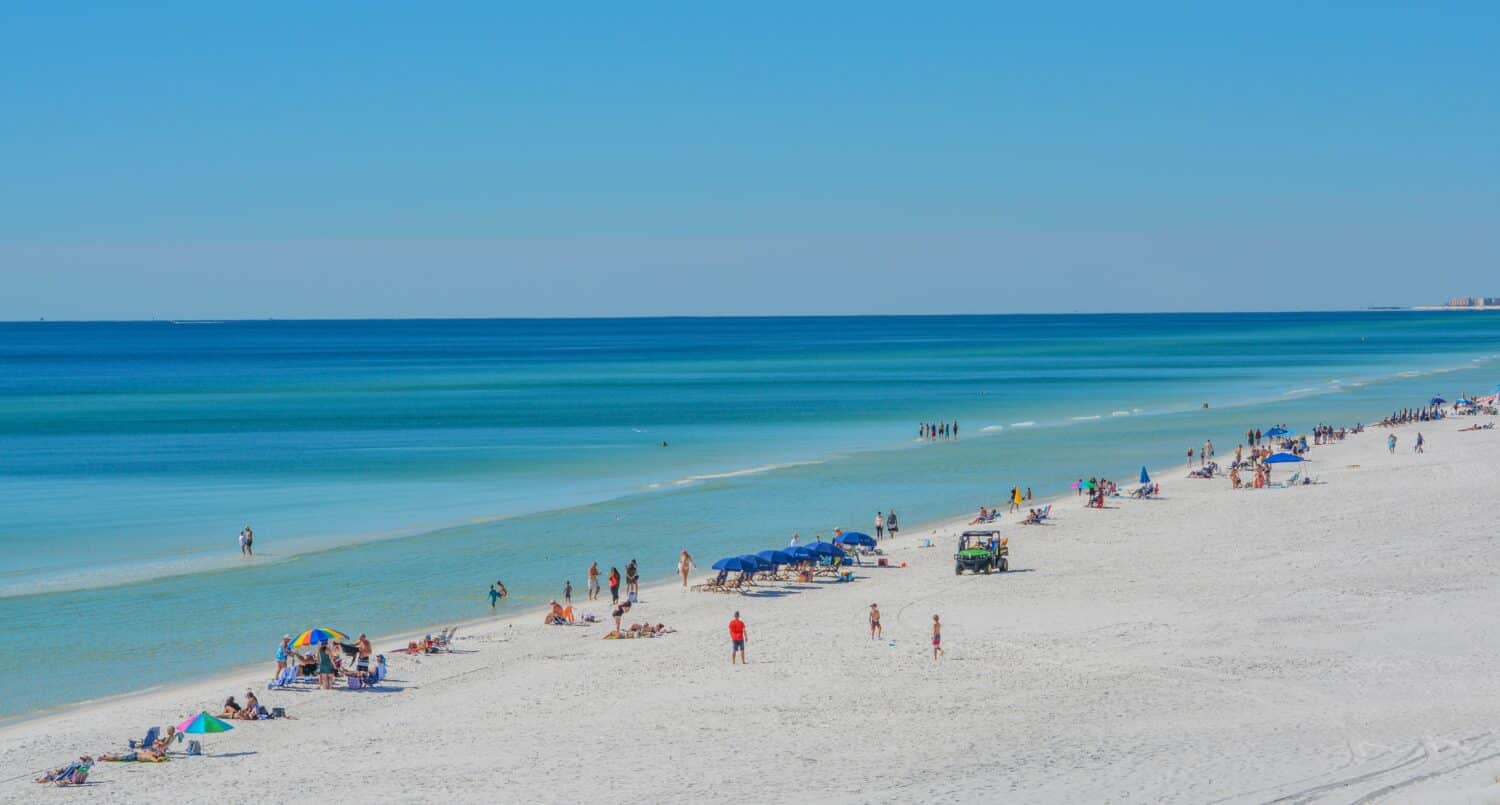
Miramar Beach in Florida is on the coast of the Gulf of Mexico.
©Norm Lane/Shutterstock.com
Topping our list is the Gulf of Mexico. It covers an amazing 617,800 square miles in the Northern Hemisphere. The Gulf of Mexico is bordered by North America on most sides with the United States on the northern side and Mexico on the western and southern boundaries. It joins the Atlantic Ocean to the east. You can visit many regions on the Gulf, including parts of Florida, Louisiana, Texas, and Mexico. Gulf Island National Seashore is part of the national parks system that features part of the Gulf of Mexico’s 3,700-mile shoreline.
Animals in the Gulf of Mexico are plentiful. Some are large like the sperm whale, bluefin tuna, or whale shark. Other, like shrimp, are small but plentiful. Blackfin sharks, bullsharks, and hammerheads are two of the largest predators in this body of water.
Gulf of Guinea
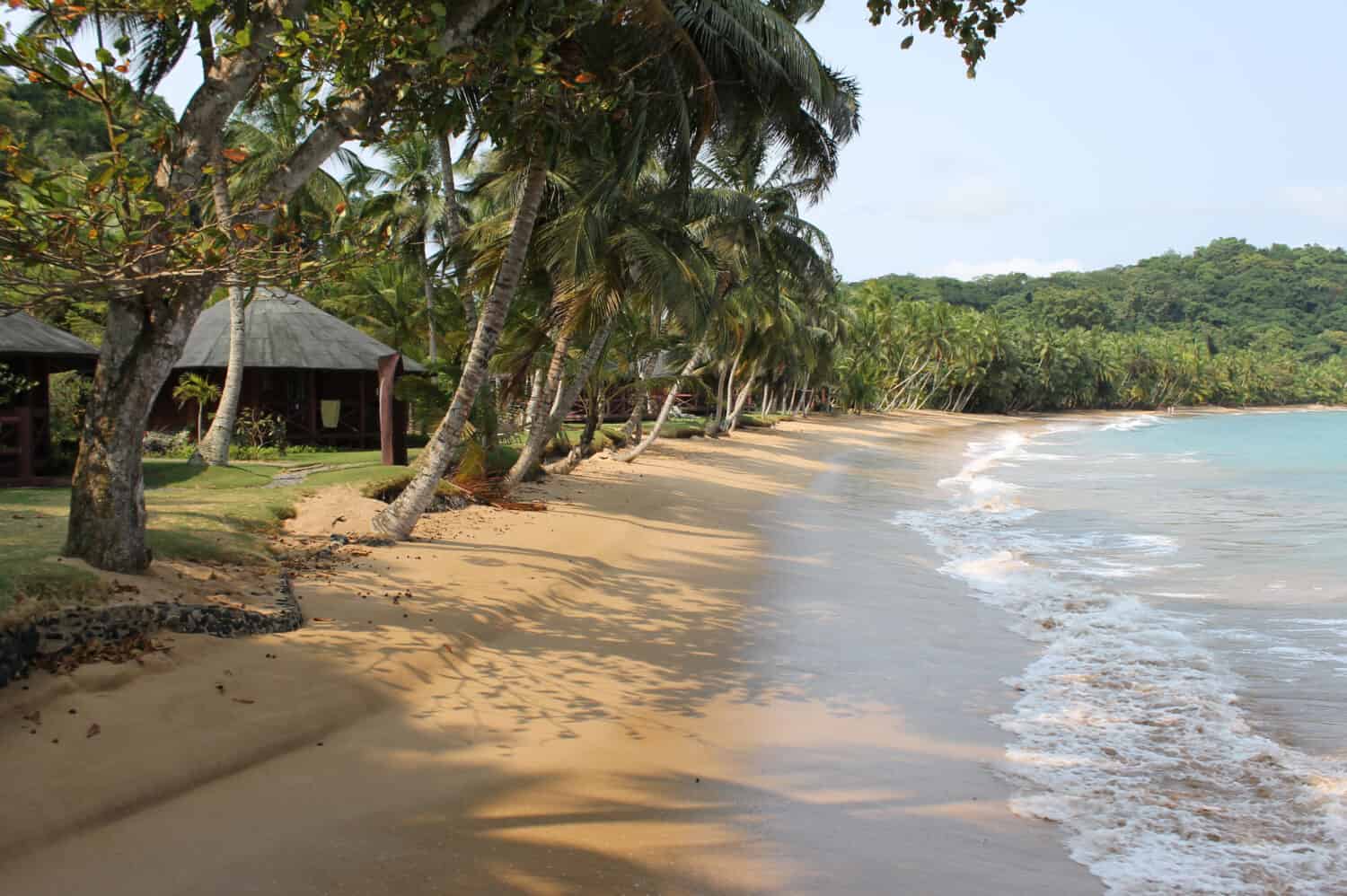
Principe Island in the Gulf of Guinea is just over 50 square miles.
©Cesar J. Pollo/Shutterstock.com
The Gulf of Guinea borders the western coast of Africa, specifically Liberia, Ivory Coast, Ghana, Togo, Benin, Nigeria, Cameroon, Equatorial Guinea, Gabon, São Tomé and Príncipe, Republic of Congo, Democratic Republic of Congo, and Angola. It is around 907,000 square miles in total. The Gulf of Guinea does have some modern-day piracy operations in its waters. These can be very dangerous, especially for cargo ships, which are the most common targets.
There are plenty of fish in the gulf. Tilapia, herring, sardines, anchovies, and mackerel are some of the most important fish economically. There are also some species of catfish, shrimp, and sea turtles as well.
Gulf of Alaska
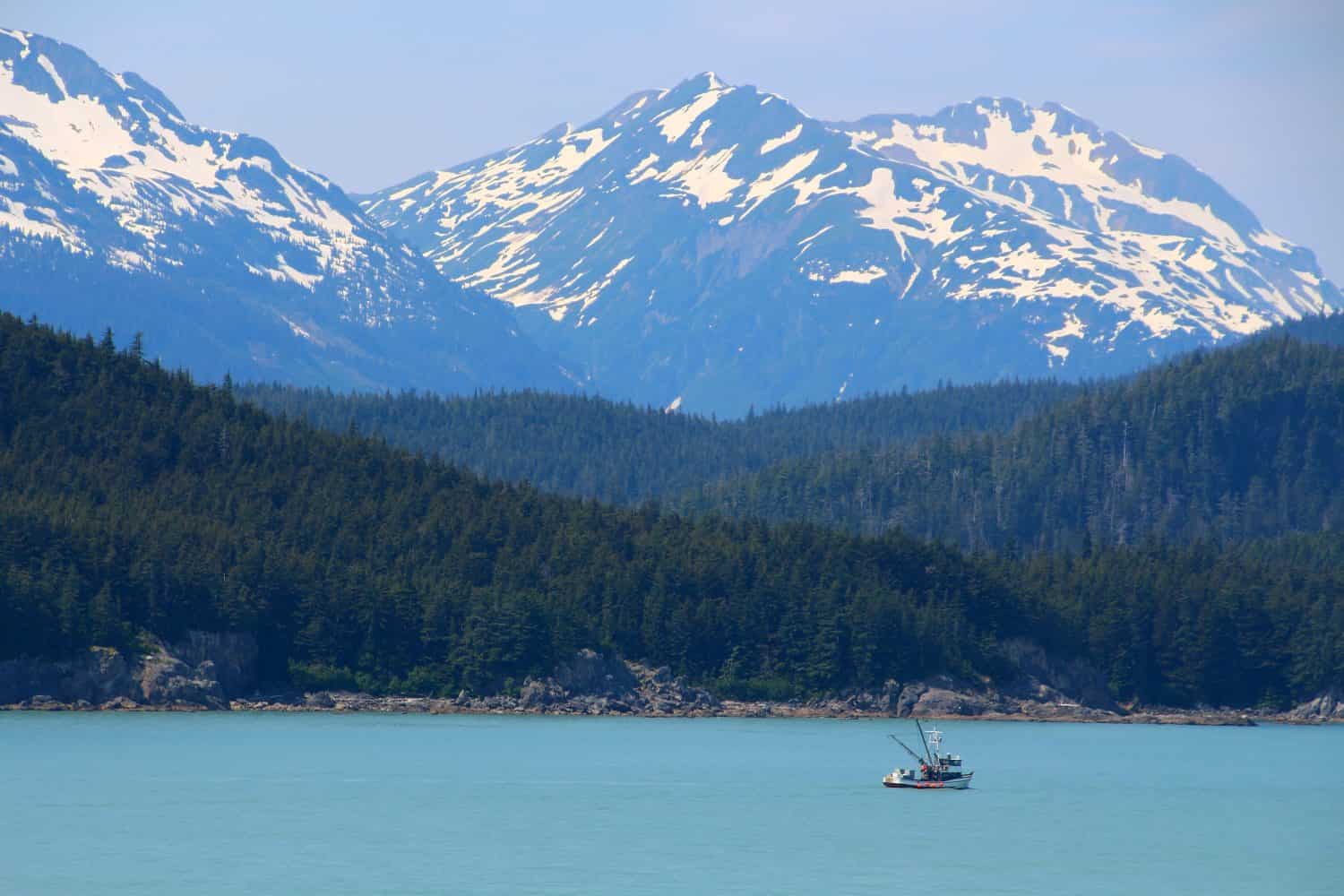
The Gulf of Alaska has breathtaking views from land and water.
©jet 67/Shutterstock.com
Only the United States and Canada border the massive Gulf of Alaska. It covers 591,900 square miles and is located in the northern Pacific Ocean. It is dominated by glacial waters, most notably the Malaspina Glacier and Bering Glacier which are the two largest glaciers in the United States and both on the coast of this gulf. There are also numerous inlets, bays, and fjords in the area. Even though it gets very cold in the region, the Gulf of Alaska does not ice over.
There are numerous amazing species in the waters of the Gulf of Alaska and wildlife watching tours bring many tourists to the area. The largest animals, including beluga whales, humpback whales, and killer whales are often synonymous with these waters. Dolphins, porpoises, sea otters, and harbor seals also call this region home. On land, you might catch a glimpse of a polar bear looking for a seal snack or diving into the water, although they do not venture out into the deeper parts of the gulf.
Persian Gulf
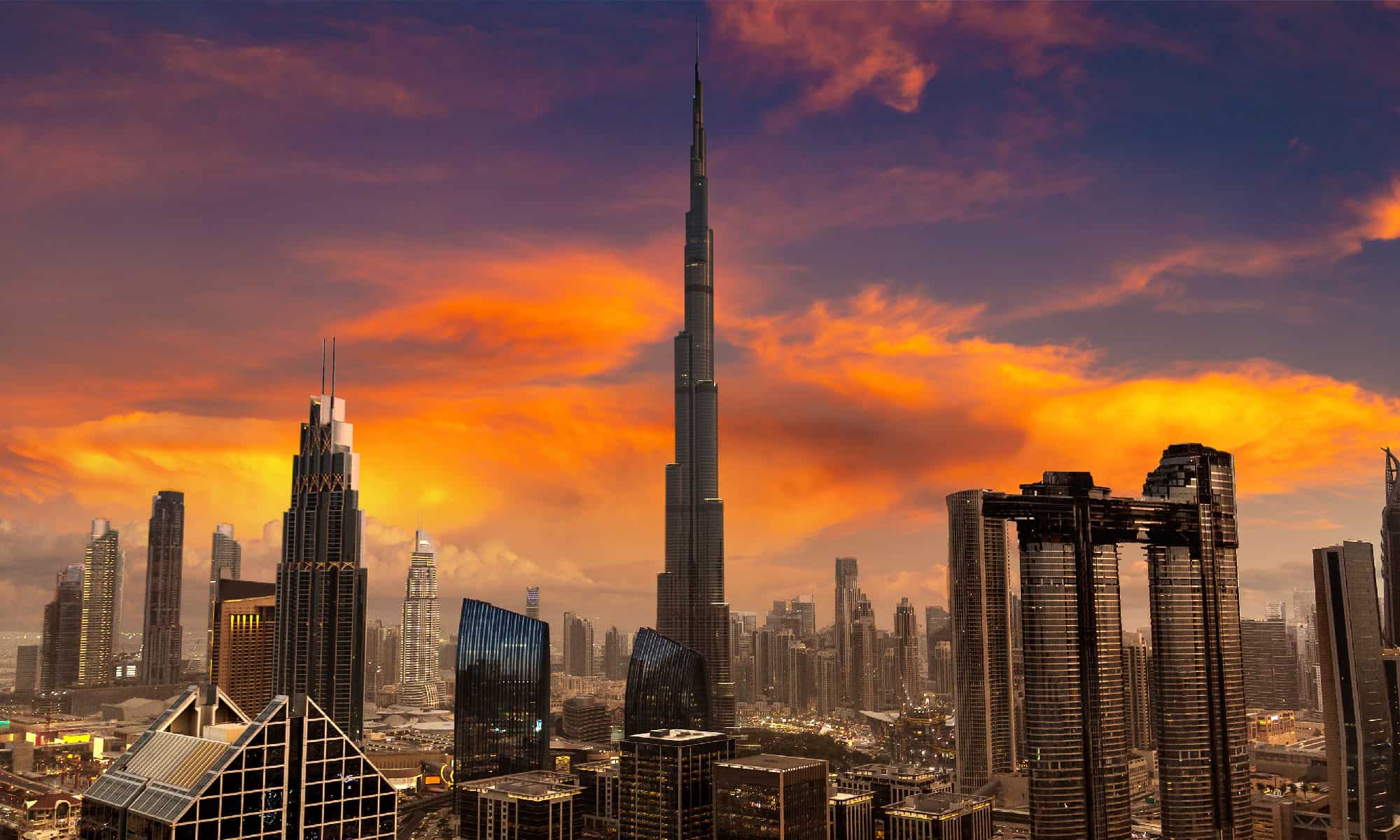
Dubai is a city in the UAE on the Persian Gulf and home to the tallest building in the world, the Burj Khalifa.
©iStock.com/bloodua
This gulf off the Indian Ocean is 96,912 square miles. It is also known as the Arabian Gulf and each region within the gulf has a distinct geographic name as well. It is bordered on one side by Iran and by the Arabian Peninsula on the other side. The United Arab Emirates, Qatar, Bahrain, Saudia Arabia, and Iraq form the other border.
This gulf is full of amazing marine life, including sharks, dolphins, fish, and some whales. It is also a notable habitat for coral and similar marine life. But because it is only accessible through the narrow Strait of Hormuz, the gulf has developed a very unique ecosystem. Dolphins and porpoises, as well as fish, are common. Larger marine animals, such as large whales, are less common. It is home to dugongs, a relative of the manatee. But pollution from shipping traffic, which is active in the Persian Gulf, is a threat to many of the animals living in this body of water.
Gulf of Oman
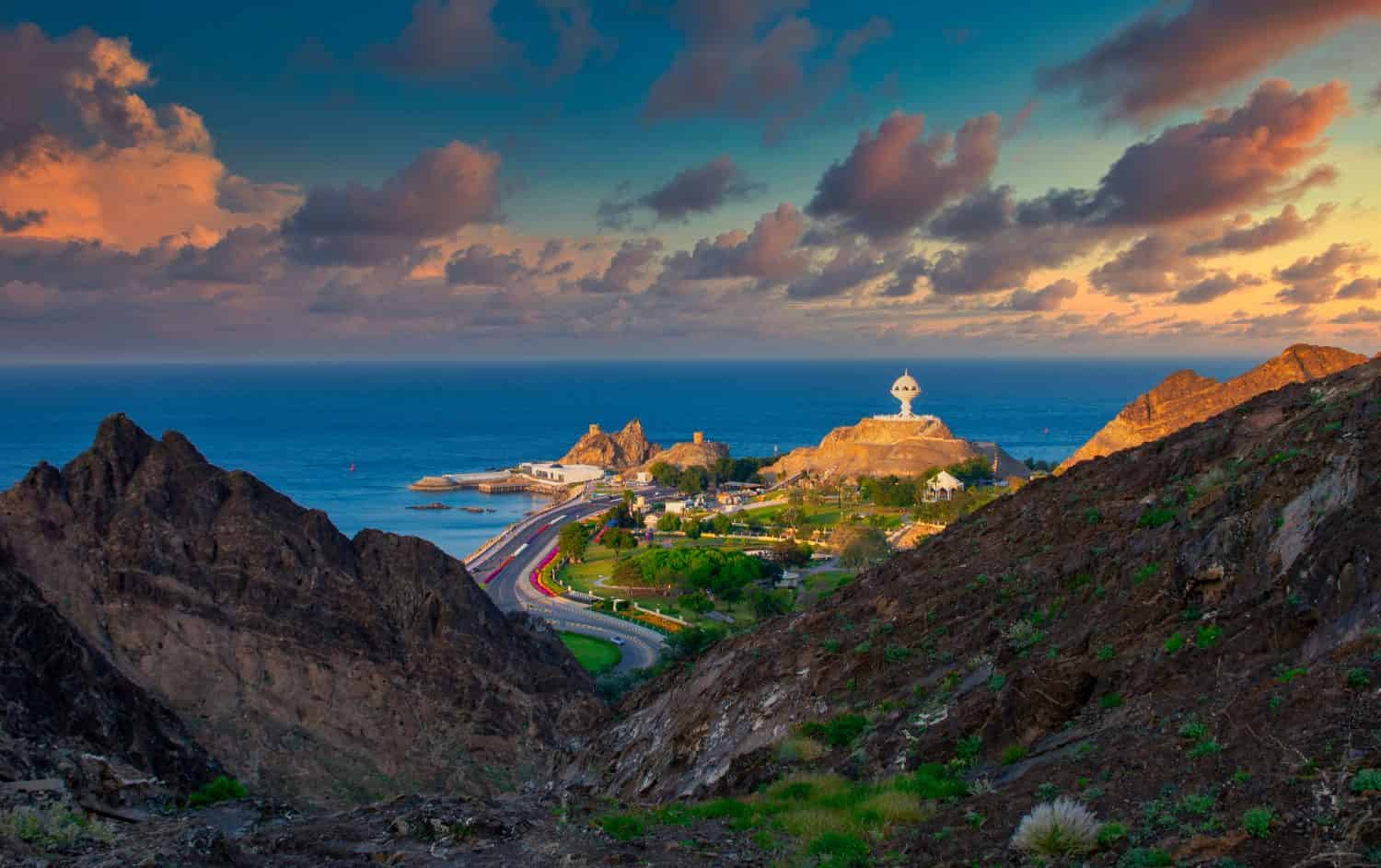
The waterfront of Mutrah Corniche in Muscat, Oman is on the Gulf of Oman.
©Jahidul-hasan/Shutterstock.com
On the other side of the Strait of Hormuz from the Persian Gulf is the Gulf of Oman. It is 44,000 square miles in area. It is bordered by Oman, the United Arab Emirates, Iran, and Pakistan. This gulf connects directly to the Arabian Sea and eventually the Indian Ocean. It also sees a lot of shipping traffic as large container ships travel toward the Strait of Hormuz.
The Gulf of Oman is home to many of the same animals as the Persian Gulf. More large marine animals, such as humpback whales, sperm whales, and orcas can make it into these waters due to its proximity to the Arabian Sea and the Indian Ocean.
Gulf of Carpentaria

Karumba is a small town on the Australian coast on the Gulf of Carpentaria with epic scenic views.
©Shirley Jayne Photography/Shutterstock.com
On the northern side of Australia lies the Gulf of Carpentaria. On the other side of the gulf are Papua New Guinea and Indonesia. Overall, it is around 120,000 square miles.
The Gulf of Carpentaria is home to marine animals such as sharks, snapper, tuna, and mackerel. These larger fish are the top predators in their environment. Smaller schooling fish, shrimp, and other crustaceans also call this gulf home. There are a lot of fringing reefs in this gulf, although there are no larger barrier reefs, such as the famous Great Barrier Reef in the nearby Coral Sea.
Gulf of Finland
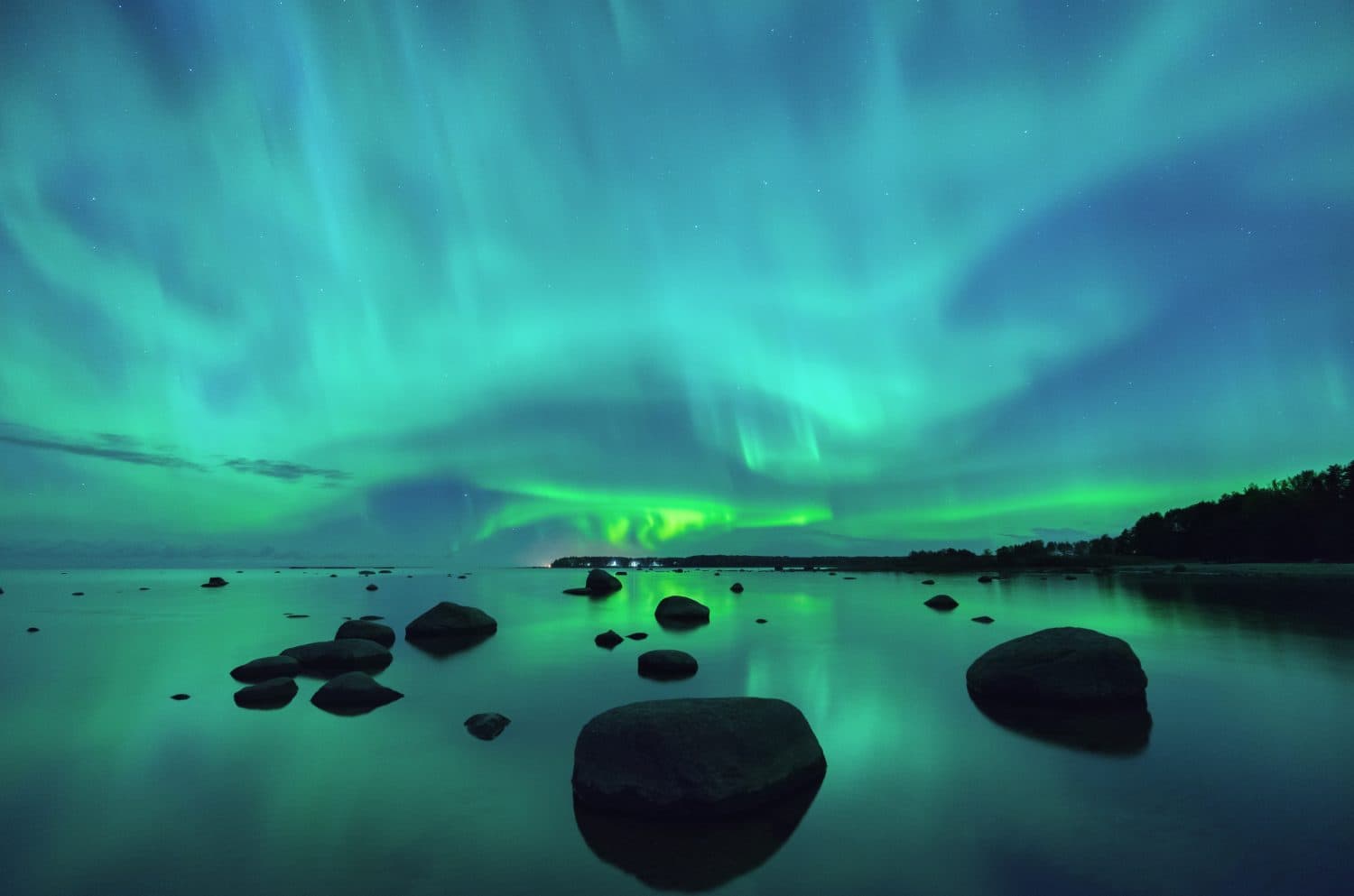
One of the most stunning views of the Gulf of Finland happens under the aurora borealis or Northern Lights.
©Smelov/Shutterstock.com
If you want a chance to see the Northern Lights from one of the world’s gulfs, the Gulf of Finland is where you want to go. Located between Finland, Russia, and Estonia, this body of water is around 11,580 square miles in total. It connects to the Baltic Sea. It is much wider than it is tall. The east-west distance is almost 250 miles while the north-south distance is less than 100. In some places, it is less than 10 miles across. The Gulf of Finland is important to the economies of these countries because it is the main shipping way into St. Petersburg in Russia, Tallinn in Estonia, and Helsinki in Finland.
This gulf does freeze for at least a few months each year. This makes it a very fascinating place to study, especially when you look at the animals that live under its surface. Many species of fish in the gulf are fished commercially. These include salmon, minnows, carp, smelt, trout, perch, bream, pike, herring, cod, and many others.
The photo featured at the top of this post is © Artiom Photo/Shutterstock.com
Thank you for reading! Have some feedback for us? Contact the AZ Animals editorial team.







